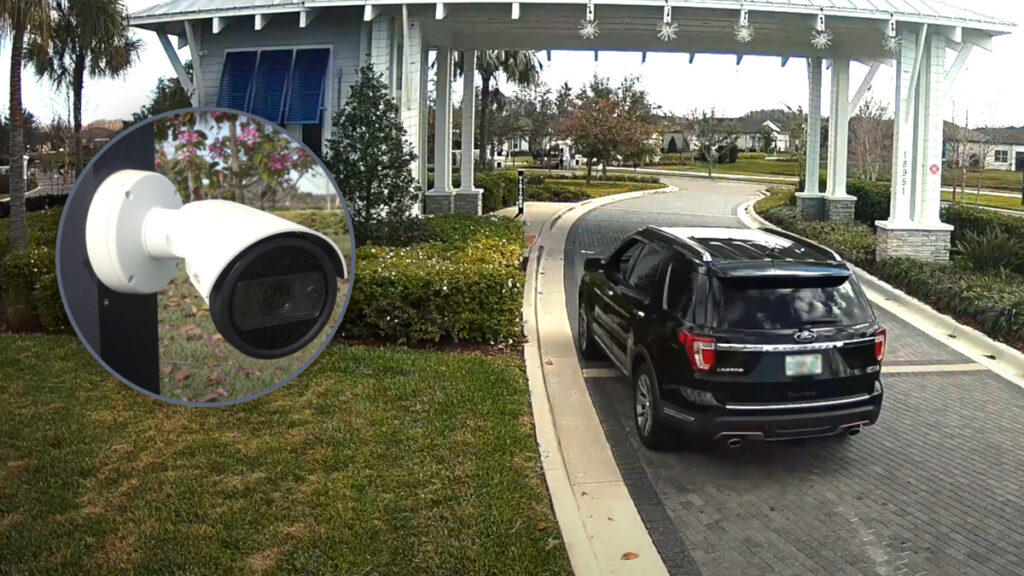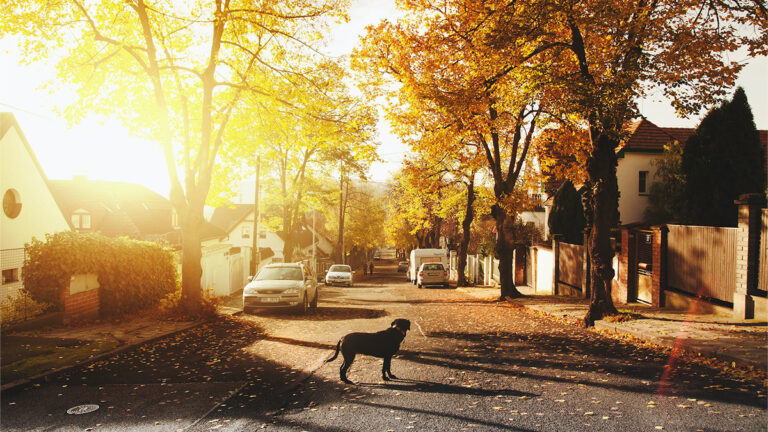Concerned about property crime in Virginia? Discover the reality behind the statistics: In 2022, car thefts escalated by nearly 22%, contributing to Virginia’s property crime landscape. This article presents an up-to-date analysis of Virginia property crime statistics, detailing variations by crime type and region. Gain insights without the fluff as you learn about the prevalence and patterns of property crime affecting Virginian communities.
Key Property Crime Statistics
- Virginia experienced a growing trend in property crime in 2022, with a 22% increase in car thefts, while overall property crime rates have declined by 29% from 2012 to 2021.
- Community programs like Project Safe Neighborhoods and innovative law enforcement strategies, including the use of technology such as CCTV, have been key in the fight against property crimes, contributing to the long-term decline.
- Advanced access control measures, such as license plate recognition technology, security cameras, and virtual guard services, are becoming increasingly vital for preventing property crime and managing security remotely.
Analyzing Virginia’s Property Crime Rates
In 2022, Virginia witnessed an aggregate count of 20,324 property crimes with the value of stolen cars amounting to over $201 million. A startling figure that reveals an alarming uptick of nearly 22% in car thefts and attempted car thefts compared to the previous year. Examining these figures closely exposes a multilayered narrative that highlights law enforcement’s role, their strategies for identifying potential suspects, and the diverse types of crimes that make up property crime in Virginia.
In this complex web of crime statistics, each strand represents a unique aspect of property crime. The types of crimes, regional variations, and the trends over time all combine to create a comprehensive picture of property crime in our communities. But, what are the most common types of property crimes in Virginia? And how do these rates vary across different regions?
Breakdown of Property Crimes in Virginia
The recognized types of property crimes in Virginia include:
- Burglary
- Larceny-theft
- Motor vehicle theft
- Arson
You might be curious about which of these crimes are most common. Trespassing, vandalism, arson, larceny, embezzlement, robbery, and burglary are the most widespread property crimes in Virginia.
In a more recent statistical breakdown from 2020 to 2021, there was a 1% decrease in both the total number of property crimes and the property crime rate. However, combating property crimes isn’t a straightforward process. It involves understanding the regional variations in these crime rates and the factors that influence this variation.
Regional Variations in Property Crime
The property crime rates across different cities and counties in Virginia are as diverse as the state itself. Some areas, like Bridgewater and Purcellville, have experienced significant decreases in crime rates over the last decade. However, the opposite is true for the northwest part of Virginia, which is known for its elevated property crime rates.
This variation in property crime rates across different regions of Virginia is influenced by factors such as economic issues, including unemployment rates and income inequality. For instance, the urban areas in Virginia have property crime rates that are almost double those in rural areas, indicating a notable disparity. However, how have these rates evolved over time?
Year-Over-Year Property Crime Trends
Over the last decade, Virginia has witnessed a consistent decrease in property crime rates. From 2012 to 2021, the total number of property crimes in Virginia decreased by 29%, and the property crime rate per 100,000 population also saw a decline of 33%.
This downward trend is influenced by various factors, including economic considerations such as the state’s economic situation, unemployment rates, and income inequality. The downward trend was also reflected in various categories of property crimes, including robberies, burglaries, and larcenies. These trends closely mirror the fluctuations in national crime rates, while consistently maintaining a level substantially below the national averages.
The Impact of Property Crime on Virginia Communities

Despite the downward trend in property crime rates, they still significantly affect Virginia communities. Property crime results in a noticeable escalation in fear and insecurity among residents and businesses, as evidenced by a 32% increase in Richmond and a 73% increase in Manassas. These socio-economic effects also encompass elements from Becker’s economic theory of crime, indicating that regions with higher incomes may offer greater relative incentives for engaging in property crimes.
Community initiatives, like the Project Safe Neighborhoods (PSN) program, have proven to be effective in reducing property crime throughout Virginia, showcasing the significance of focused local endeavors. Residents can also contribute to the reduction of property crime by participating in neighborhood watch programs and reporting suspicious activities.
Community Initiatives to Reduce Property Crime
Community initiatives play a significant role in mitigating property crime. Programs like Project Safe Neighborhoods and proactive crime reduction strategies implemented by the City of Norfolk have demonstrated success in reducing property crime in Virginia.
In addition to these initiatives, Neighborhood Watch programs have also proven effective. They:
- Address crime prevention issues
- Restore pride and unity to neighborhoods
- Focus on observation and awareness
- Reduce opportunities for crime to occur
This has led to substantial decreases in burglary, vandalism, and larceny.
Furthermore, citizens can anonymously provide information to law enforcement through initiatives like the Peninsula Crime Line.
The Role of Local Law Enforcement
Local law enforcement agencies play a crucial role in mitigating property crimes. The chief of police, being the primary law-enforcement officer within their jurisdiction, is entrusted with the authority to effectuate arrests for property crimes.
To address property crimes more effectively, Virginia’s local law enforcement, including the Virginia Beach Police Department, has implemented new statistical tracking strategies. Additionally, they offer resources for crime prevention, such as:
- basic crime prevention powerpoints
- business-workplace crime prevention
- the use of CCTV
- code enforcement for nuisance abatement
These strategies have resulted in a consistent decrease in property crime rates over the past decade, suggesting effective endeavors by local law enforcement in mitigating these offenses.
Advanced Access Control Measures Against Property Crime
In combating property crime, advanced access control measures have emerged as a game-changer. These measures encompass:
- Implementation of advanced access control systems
- Surveillance and real-time monitoring
- Provision of adequate lighting for enhanced safety
- Tenant education
Access control systems function by implementing physical security measures on the property and mandating individuals to possess specific credentials, such as a keycard or pin number, to gain entry. Furthermore, these systems facilitate the tracking and monitoring of individuals who enter and exit the property.
License Plate Recognition Technology
License Plate Recognition Technology, also known as Automatic Number Plate Recognition (ANPR) or ALPR, uses optical character recognition to automatically capture and interpret vehicle license plate information.
This technology is capable of gathering and retaining information about vehicles, such as dates, times, locations, and plate names. This data can be utilized to identify individuals or suspects, verify alibis, and monitor vehicle movements, thus playing a crucial role in preventing property crime by providing assistance to law enforcement and security personnel.
Security Cameras and Video Surveillance

Security cameras and video surveillance systems are instrumental in preventing property crime and boosting safety in homes and public spaces. They serve as a deterrent for burglaries and thefts, offer evidential support for investigations, and enable remote monitoring.
In Virginia, the efficacy of video surveillance technology has been demonstrated in deterring a substantial portion of property crime, contributing to overall safety improvement. They act as a deterrent, potentially leading to a 50% reduction in crime by alerting potential burglars to the possibility of being recorded.
Virtual Guard Services: A Modern Approach to Security

The introduction of virtual guard services has transformed the realm of property security. These services integrate:
- Cutting-edge access control
- Automated gates
- Video surveillance
- Audio intercom technologies
- Automatic license plate recognition
To remotely oversee controlling access and permitted access activities at properties.
The top remote guard system and virtual guard systems offer:
- Swift resident access
- Comprehensive guest screening
- Storage of high-resolution images of vehicles, license plates, and individuals
- Granting homeowners full control over community access
- Instantaneous video verification provides a reduction in false alarms and enhanced response times
- Availability of recorded footage for documentation purposes
Comparing Onsite Security Guards and Virtual Guards
Onsite security guards, including licensed security guards, monitor premises, safeguard property and personnel, prevent and identify onsite crime, and react to incidents. Their presence offers reassurance to stakeholders, effectively monitors business premises, and bolsters overall security. However, they also come with certain drawbacks, including the possibility of their involvement in incidents, the occurrence of crimes while they are on duty, and vulnerabilities associated with human error.
On the other hand, virtual guard services offer the following benefits:
- Surveillance experts who use technology to remotely protect property
- Simultaneous oversight of multiple areas
- Preventative monitoring
- Thorough visitor verification
- Strategic database management
All of these features are aimed at enhancing security remotely.
Remote Gate Attendant Systems
Remote gate attendant systems are a significant advancement in property security. It is feasible to integrate a remote gate attendant system with any pre-existing gate, enhancing the overall security infrastructure, safeguarding private property from potential intruders and unauthorized persons, and streamlining access control procedures.
Virtual gate guards, also known as virtual gate guard services, provide a range of automated screening options for gated communities, such as:
- Scanning driver’s licenses using optical character recognition (OCR) software
- Capturing license plates with OCR recognition software
- Utilizing radio frequency identification (RFID)
- Employing intelligent keypads with random code generation algorithms
Guests can be pre-registered in a virtual gate attendant system, allowing them to be granted automatic access upon arrival at the gate.
Preventing Unauthorized Entry: Technologies and Strategies
Preventing unauthorized entry is a key factor in property security. Recent technologies employed to deter unauthorized entry include network analytics, the implementation of the principle of least privilege, and robust password management policies.
OCR recognition software assists in visitor verification by digitizing and identifying characters from scanned images, extracting relevant data from identity documents. This process is crucial for the precise and effective verification of visitors and plays a role in preventing unauthorized entry.
Intelligent Keypads and Random Code Generation Algorithms

Intelligent keypads in securing access points, such as a security kiosk, operate by enabling users to input a code on the keypad, thereby unlocking the door. The key or PIN can be distributed among authorized individuals for access.
Random code generation algorithms, such as the random code generation algorithm we discuss here, are employed in security systems for the following purposes:
- Producing unpredictable numbers for cryptographic purposes
- Creating secure keys or tokens
- Bolstering security and creating challenges for potential attackers attempting to compromise the system
These algorithms guarantee that the generated numbers possess sufficient randomness.
OCR Recognition Software for Visitor Verification
OCR recognition software is a specific type of software that employs optical character recognition technology to transform scanned documents or images into text that can be edited and searched.
OCR recognition software is utilized in visitor verification by converting the image of the visitor’s identity document into digital format through an optical scanner. Subsequently, the software scans the characters in the image, recognizes the text, and extracts pertinent data for verification purposes.
The Financial Benefits of Investing in Security
Investing in advanced security measures can significantly mitigate the risk and financial impact of property crime losses. Homes equipped with cameras are significantly safer from burglaries, with research indicating they are 300% less likely to be burglarized compared to those without cameras.
The typical cost for installing advanced security systems ranges from $580.00 to $1,172.00. This comparison emphasizes the protective significance of investing in security systems. Moreover, such investments have the potential to increase property values and reduce the risk of claims related to crime, although they may also result in higher insurance premiums due to the increased value of the insured property.
Summary
To wrap up, property crime in Virginia is a multi-faceted issue that requires a comprehensive approach to tackle. From understanding the various types of property crimes and their regional variations to exploring the use of modern technologies and strategies to prevent unauthorized entry, this blog post has covered it all. The fight against property crime is ongoing, but with the right measures in place, we can make strides towards a safer and more secure Virginia.
Frequently Asked Questions
Which states have the highest property crime?
Colorado and Washington had the highest property crime rates in 2021, with 3,135 and 3,134 crimes per 100,000 residents, respectively. California had the highest number of property crimes reported in 2022, with 914,517 cases.
What is the most common property crime?
The most common property crime is larceny-theft, which accounted for the majority of all property crimes in 2022. Burglary and motor vehicle theft followed behind.
Where does Virginia rank in crime?
Virginia ranks 8th lowest in per capita crime rate in America. This shows that the state has relatively low crime rates compared to other states.
Is crime rising in Virginia?
Yes, crime, particularly violent offenses and homicides, has been steadily rising in Virginia, with the state recording the most homicides within a four-year span in 2022.
What is a virtual guard gate?
A virtual guard gate is an autonomous system that uses artificial intelligence to detect and interact with vehicles and their drivers entering and leaving gated areas of a facility, providing security without the need for human intervention.






